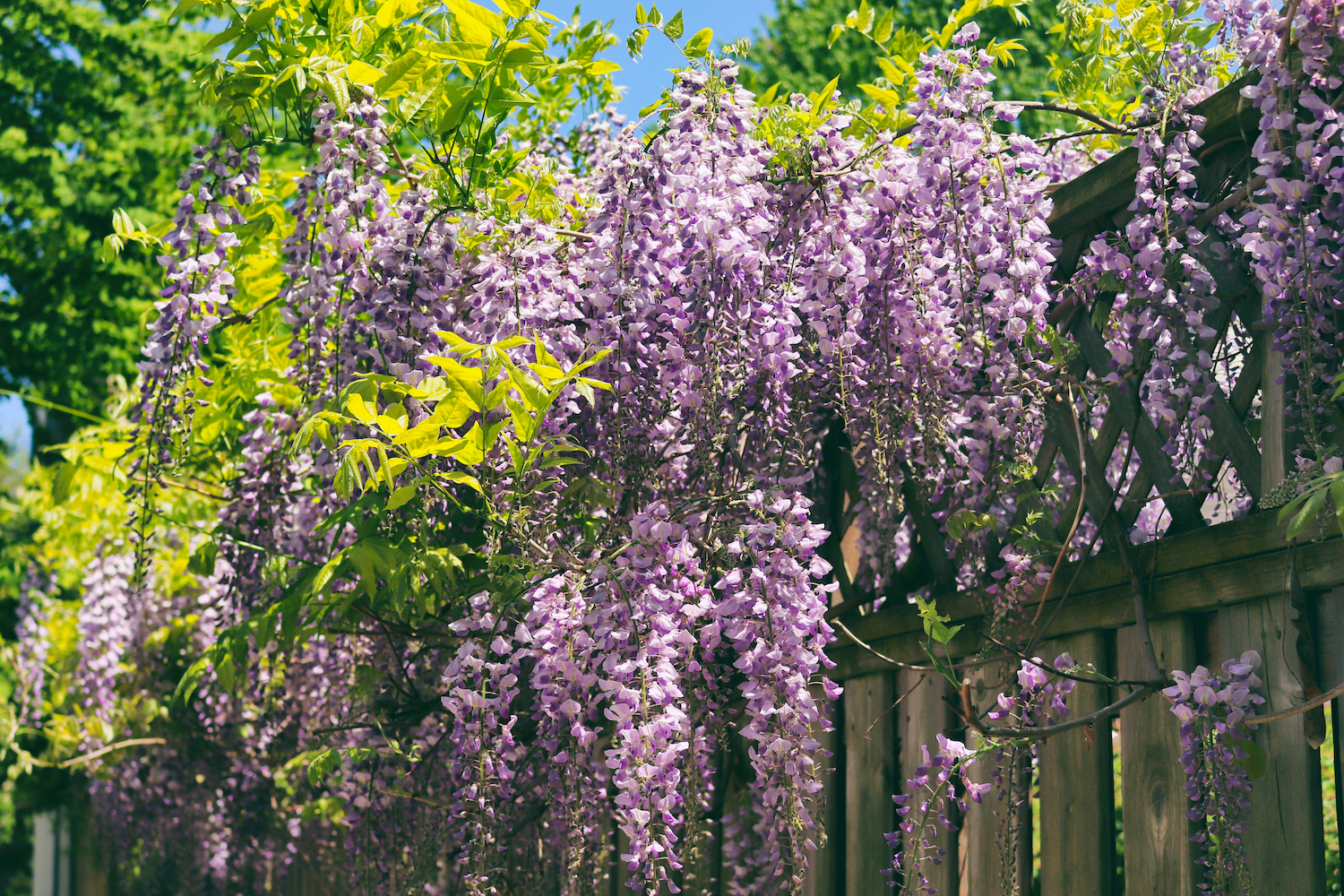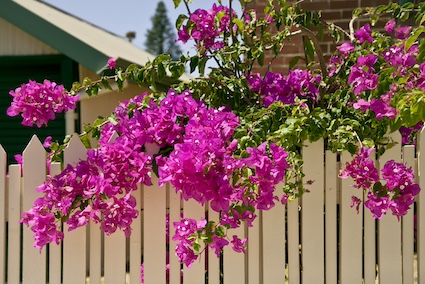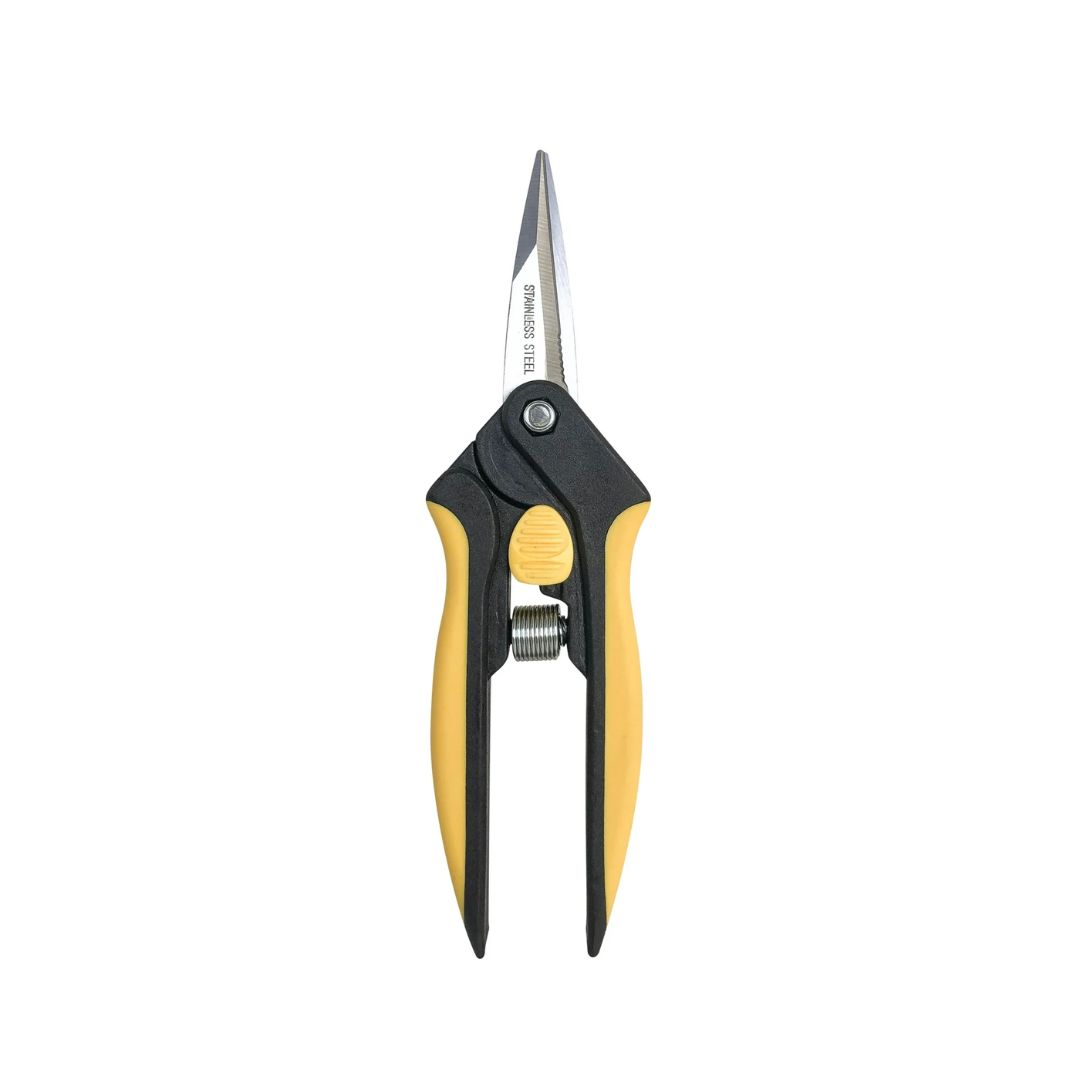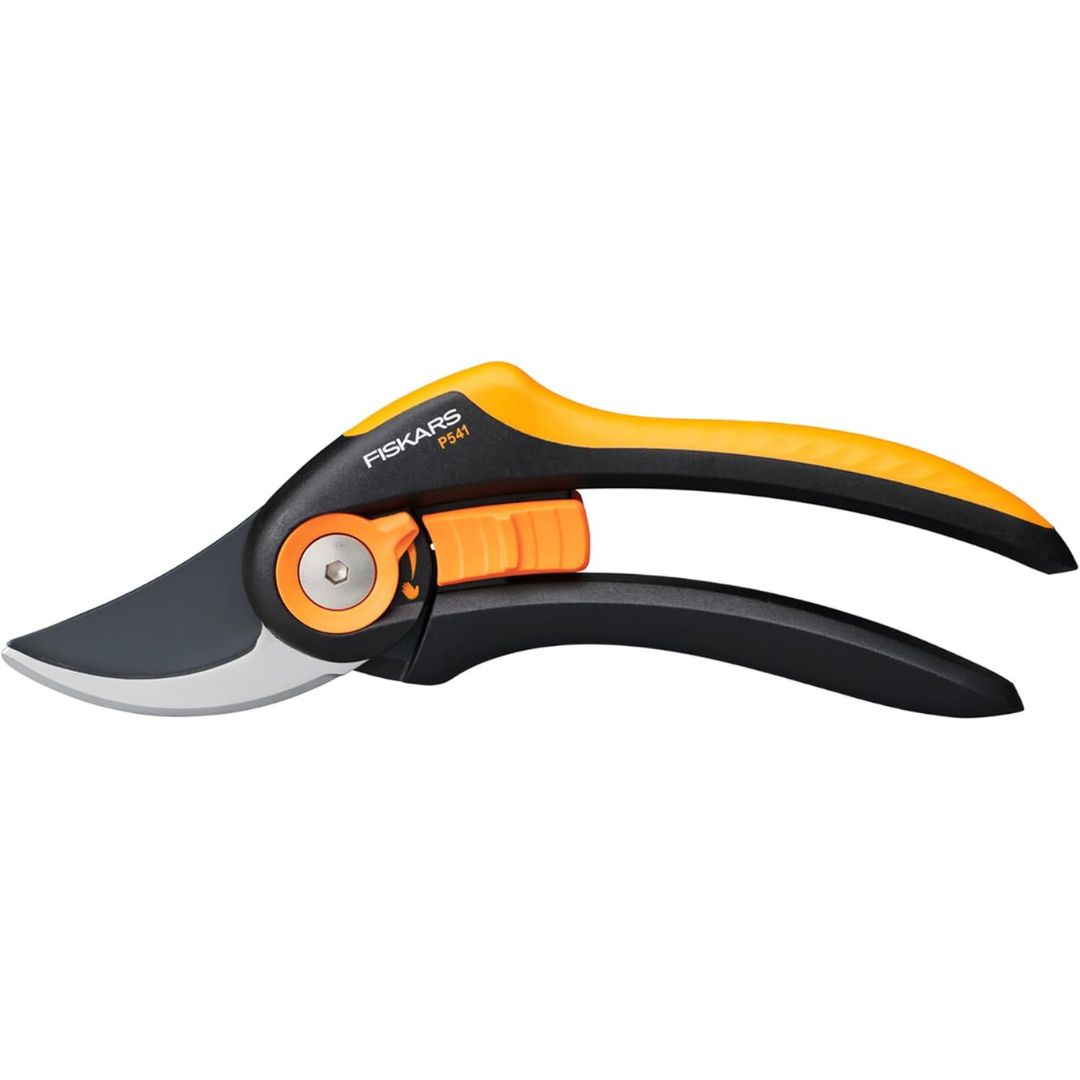7 Things You Should Prune in Your Yard in August — What to Trim to Prepare You for a Thriving Fall Season
Trim these plants, shrubs and trees to keep them blooming and beautiful for the upcoming seasons

Seasoned gardeners may know what to prune in August for a flourishing yard. But if you're not sure what to trim, how much to cut away, or you've planted something new, it's best to check.
It's all too easy to make pruning mistakes, like cutting off too much, or trimming at the wrong time. This can cause more harm than good, particularly with young plants.
Plants, shrubs and trees grow at different rates, and the climate in your zone will affect the right timing for trimming them. So find out what gardening experts have to say, before you start wielding your pruning tools.
What to Prune in August
If you're preparing your fall flowers for raised beds in time for the new season, then you'll need to know what to prune and when.
Here are 7 blossoming beauties you should prune in August.
1. Annuals

Wondering when to deadhead perennials and annuals? Well, Deadheading annuals will keep their blooms coming through the growing season. These flowers include zinnias, cosmos and salvia. Many annuals can just be pinched back, but some may require cutting with pruners or secateurs.
"Continue to deadhead annuals, not only removing spent blooms, but also cutting the flower stems back to a side branch or set of vigorous leaves," says Charlie Nardozzi, author, Month-by-Month Gardening New England.
"This technique will serve two purposes. It will clean up the annual flower, and pinching it back stimulates more new growth and another flush of flowers in September and October."
2. Wisteria

These fast growing climbing plants for privacy need to be pruned in order to flourish and bloom to the best of its ability. However, whether Wisteria and other vines should be pruned in August is dependent on where you are located.
"Pruning Wisteria vines, such as Blue Moon Wisteria or Amethyst Falls Wisteria, during late summer in August is recommended in warmer, more southern climates," says Sydni D'Amico, gardening expert, Fast-Growing Trees.
"It's beneficial because it creates better air circulation and more access to sunlight to the base of the vine. August pruning is also helpful because it reduces the amount of vegetative growth and encourages the formation of more flower buds.
"Depending on the variety of wisteria and your location, you can even stimulate one more flush of flowers before winter dormancy.
"In more northern climates that experience earlier frosts, it's better to skip pruning in August and just do the pruning in early fall to prepare for winter dormancy. As this prevents the tender new growth from getting frost damage."
Hardiness zones: 5-9
3. Lavender

Lavender is a popular addition to gardens for its calming scent and ability to attract pollinators, as much for its pretty lilac flowers. You may want to prune your bloom this month to help revive lavender and shine a spotlight onto its ultra-fragrant scent.
"In warmer, more southern climates it is recommended to lightly prune lavender plants during late August, before hard pruning them and preparing them for winter," says Sydni.
"This will encourages another flush of blooms before temperatures drop and plants go into dormancy. Pruning during this time is also useful because it helps to prevent lavender plants from becoming too woody and leggy.
"In northern climates with earlier frosts, skip light pruning in August and just do the hard pruning in early fall ready for the plant's winter dormancy. As this prevents the tender new growth from getting frost damage."
"If bees are still visiting your lavender, it's not quite time to prune yet," says Michael Griffiths, @the_mediterranean_gardener. "Wait for it to go past it's best, but before it's brown and gone to seed."
Hardiness zones: 5-9
Our Top 3 Pruning Tools

Price: $38
Style: Secateurs
Chosen by gardening Expert Tony O'Neill from Simplify Gardening, this bypass pruner is ideal for cutting through live stems and branches up to ¾ inches thick. It is made our of sharp alloy steel and is easy to use.
4. Bougainvillea

This drought-tolerant climbing vine will need some care and attention. Bougainvillea only grows as a climbing perennial in warmer parts of the world. This beautiful plant, with its intensely colorful flowers doesn't like frost or cold temperatures. However, if you are growing climbing Bougainvillea, it will need a trim, after a bountiful summer of blooms.
"Pruning bougainvillea vines during late August is recommended for shaping, bloom production, and overall health of the vine," explains Sydni. "It will encourage another flush of blooms before temperatures begin to drop for winter.
"August pruning also helps the vine to bloom more profusely and for longer periods of time, since the blooms only form on the new growth. Disinfect your pruners or shears before using them to avoid spreading disease or fungus.
"Begin by deadheading any spent blooms that may still be on the vine and any dead or dying offshoots. For longer offshoots that are not blooming, prune those back by about half of their height to encourage bloom production, for smaller offshoots, tip prune them to encourage more dense flowering.
"Bougainvillea vines can only be used as patio plants (or annuals) in colder, more northern climates because they are not cold hardy, so August pruning is only necessary for warmer zones."
Hardiness zones: 10-11
5. Floribunda and shrub Roses

The best way to plant climbing roses and help them flourish fully is by pruning them. Pruning roses in August depends on the type of rose and the climate in the region you live. This is not a 'one size fits all' practice, so be sure you know the species you're growing, before you pick up your pruners.
"Pruning rose bushes, such as floribunda and shrub, during late summer in August is recommended in warmer, southern climates," says Sydni. "Like with the other plants mentioned, it encourages another burst of blooms before temperatures drop.
"Start by pruning back any dead canes as far back as they originate to clear up space and increase airflow. Then deadhead any spent blooms that are beginning to brown or shrivel.
"Make pruning cuts at a 45 degree angle. This encourages water to run off of the stem rather than collecting inside the pruning cut, which helps to prevent disease, fungus or pests from infecting or causing damage to the area.
"In more northern climates that have earlier frosts, it's better to avoid pruning roses in August to prevent the tender new growth and buds from getting frost damage."
Kate Copsey, author, Month-by-Month Gardening New York & New Jersey concurs. "All rose pruning should have been completed last month," says Kate. "The new growth that starts after pruning does not have time to harden, which makes it more susceptible to winter damage.
"The only exception to the no-prune rule is to clip stray branches of climbing roses that encroach a walkway or dangle down too low from an arbor."
Floribunda Hardiness zones: 5-9
Shrub roses Hardiness zones: 7, 8, and 9
6. Phlox

Known to be one of the best groundcover plant to prevent weed — Phlox is a perennial plant that's popular with pollinators, so it's worth waiting until it's no longer being visited by butterflies and bees before cutting it back. This is especially pertinent if you're cultivating a wildlife garden. However, brown or decaying flowers can be removed.
"In August, in New York and New Jersey, you can deadhead and generally tidy perennials," says Kate Copsey. "If they have gone ragged at their base, trim them down to about one-third. New growth will soon fill in and although it won’t rebloom, the plants will be fine for next year."
Hardiness zones: 4-8
7. Citrus trees

Those in warmer areas, such as USDA zones 9-11 can prune citrus trees in August. So If you're growing lemons, limes, oranges, kumquats or other types of citrus, it's a good time to trim them as they're easy fruit trees to grow.
At California-based, Alden Lane Nursery, their plant expert tells us."Citrus pruning should be finished by September 1. This allows time for the leaves to harden off before winter.
"You can prune now to reduce the shape or size, to clean up dead wood and to allow light into the center of the trees. Be aware that plants should be well watered prior to pruning, and don't prune any that are drought-stressed."
Hardiness zones: 9-11
FAQS
What is the purpose of pruning?
Pruning trees and trimming plants back is essential for them to grow well. It allows a plant to put its energy into new growth for the next season, stops new shoots from becoming frost damaged and can prevent disease.
"Proactive tree pruning will ensure a lush and healthy fruiting and flowering season next year while mitigating risks, and ensuring both the health of the trees and the safety of the surrounding area," says landscape gardener, Rituparna Simlai, founder, Studio Arth.
"Structural pruning is essential in the early stages of a tree, aimed on developing a single main trunk and well-spaced secondary branches. The removal of competing branches results in a strong and resilient structure."
Rituparna continues: "Selective pruning involves removing some of the branches that are too close together or growing at awkward angles. This not only improves air circulation and light penetration within the canopy, but also ensures that the remaining branches have sufficient space to grow strong and resilient. Limb overcrowding can create weak points in a tree. A pruned tree can maintain a balanced structure with reduced stress on individual branches."
Be The First To Know
The Livingetc newsletters are your inside source for what’s shaping interiors now - and what’s next. Discover trend forecasts, smart style ideas, and curated shopping inspiration that brings design to life. Subscribe today and stay ahead of the curve.
Jacky Parker is a London-based freelance journalist and content creator, specialising in interiors, travel and food. From buying guides and real home case studies to shopping and news pages, she produces a wide range of features for national magazines and SEO content for websites
A long-time contributor to Livingetc, as a member of the team, she regularly reports on the latest trends, speaking to experts and discovering the latest tips. Jacky has also written for other publications such as Homes and Gardens, Ideal Home, Red, Grand Designs, Sunday Times Style and AD, Country Homes and Interiors and ELLE Decoration.
-
 Pleated Lampshades Are the Silhouette of the Season — I've Found 9 For Well Under $100 (You'll Never Guess Where)
Pleated Lampshades Are the Silhouette of the Season — I've Found 9 For Well Under $100 (You'll Never Guess Where)Leave it to Walmart to bless us with a collection of stunning pleated lampshades — proving this old-fashioned feature can look fresh and modern
By Devin Toolen
-
 I Found the "Healthiest” Bedding for Earth Month — Why Ettitude Is the Sustainable Sleep Label to Know
I Found the "Healthiest” Bedding for Earth Month — Why Ettitude Is the Sustainable Sleep Label to KnowSofter than silk and smarter than cotton, Ettitude’s innovative take on bedding delivers luxury with a conscience
By Julia Demer

